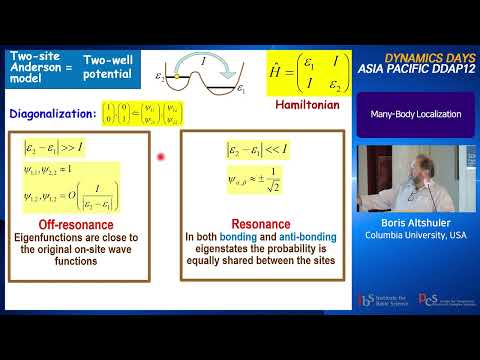Description:
Explore the fascinating world of Many-Body Localization in this 49-minute lecture by Boris Altshuler from PCS Institute for Basic Science. Delve into the concept of localization in quantum particles, first discovered by P.W. Anderson over 60 years ago, and its evolution into a broader framework for understanding the transition between integrable and chaotic behavior in quantum systems. Examine the phenomenon of Many-Body Localization (MBL) and its implications for non-integrable many-body systems with numerous degrees of freedom. Investigate various examples of the MBL transition and the related issue of ergodicity in extended many-body states. Cover topics such as Anderson localization, microwave localization, the Anderson model, transport phenomena, phonons, hopping conductivity, energy conservation, classical metallic behavior, and the physics and theory behind many-body localization. Explore concepts like rectangular billiards, Hamiltonian perturbations, bitstrings, organicity, renew entropies, fractal dimensions, and the two transitions involved in MBL. Conclude with a Q&A session to further deepen your understanding of this complex and evolving field of quantum physics.
Read more

Many-Body Localization: From Anderson Localization to Quantum Chaos
Add to list
#Science
#Physics
#Condensed Matter Physics
#Many-Body Localization
#Quantum Mechanics
#Mathematics
#Chaos Theory
#Statistics & Probability
#Probability Theory
#Ergodicity
#Mathematical Physics
#Integrable Systems
#Anderson Localization